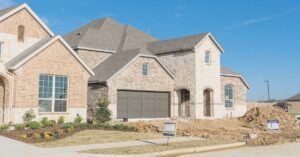A startling new report from Seattle-based real estate brokerage Redfin found that a typical African American family was able to afford only 25% of the for-sale homes in major U.S. metropolitan areas in 2018.
That’s down from the 39% affordable-housing share for the median-income black household in 2012. Last year, 57.5% of listings were affordable to white households, down from 69.1% in 2012. And although both demographics experienced a decrease in their share of affordable listings during that seven-year period, African American households saw a larger reduction of 13.3 percentage points, compared to 11.7 percentage points for white home seekers.
“Home prices have risen 70% since the beginning of the housing-crash recovery in 2012,” said Daryl Fairweather, Redfin’s chief economist. “African Americans, who were disproportionately affected by the housing crash in 2008, have found it much harder to get back into homeownership, especially as prices skyrocketed out of budget.”
These figures represent not only a deficiency of affordable homes, but also a broader issue of wealth building, said Jason Allen, a Maryland-based Redfin market manager.
“As prices rise, minorities can get squeezed out of a neighborhood,” Allen said. “For a lot of people, homeownership is their main vehicle for building long-term wealth. Many African American families who can only afford to buy homes in communities with fewer amenities, lower-rated schools and long commutes end up sacrificing not only long-term appreciation, but also access to better job opportunities for themselves and better educational opportunities for their children.”
And since there continues to be a shortage of homes at affordable price points, “the future doesn’t bode well for African Americans who aspire to be homeowners without a government effort for change,” Fairweather said.
Notably, of the 46 metro areas included in Redfin’s study, none had more than a 50% share of affordable listings for median-income African American households.
The most-affordable metros for African American families are in the South, with Memphis leading the way with a 48.7% share of affordable listings. Atlanta was next at 42.2%, followed by San Antonio at 41.1%. Even in those areas, however, there are stark discrepancies between what white and black households can afford.
In Memphis, for example, white households can afford 80.4% of listings — 31.7 percentage points higher than black households. In Atlanta, the difference is 27.1 percentage points, while in San Antonio, it’s 21 percentage points. In other areas, the gulf is even wider. In Minneapolis, where the largest discrepancy exists, white households can afford 73.9% of listings, while African American households can afford only 15.6% — a whopping 58.3 percentage-point gap.
The smallest discrepancies between what white and black households can afford, notably, are in expensive cities where few people in general can afford a majority of the listings. San Jose has the smallest gap among these cities at 6.3% — African American families can afford a miniscule 0.3% of listings, while white families can afford 6.6%.
From 2012 to 2018, Baltimore saw the smallest decline in the share of homes affordable to African Americans, with a drop of 1.2 percentage points. Baltimore also the only metro area in which the percentage of listings affordable to white households didn’t decrease, instead growing by 0.1 percentage points over the seven-year period. The largest decline in the affordable-home share for African American households was in Las Vegas, which saw a 46.6 percentage-point reduction from 2012 to 2018.
Although incomes have been rising for African American families — as they have for the nation as a whole since 2012 — these gains have been surpassed by home-price growth. Allen said that, in order to promote healthy diversity, it’s important for have a mix of affordable-housing types — such as condominiums, townhomes and single-family homes — available to a diverse group of people.
“African American families — especially those with children — often face some hard choices and trade-offs when it comes time to consider buying a home,” Allen said. “If they want to find a big home that they can afford, they can end up forced to the less desirable areas.”





